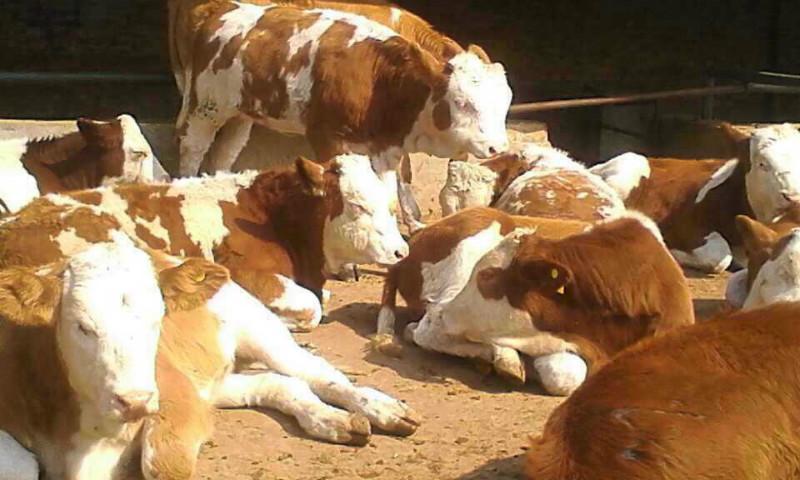On October 26, the China Feed Industry Association approved the release of the two group standards "Compound Feed for Piglets, Growing and Finishing Pigs" and "Compound Feed for Laying Hens and Broilers". Important measures taken to reduce consumption and reduce emissions at the source are also effective measures to further enhance the competitiveness of the industry.
The group standard focuses on reducing the protein content of compound feeds, and advocates the application of high-efficiency low-protein diet systems. It is forward-looking and instructive. It has a milestone significance in China's feed industry and will have a profound impact on green development.
The announcement of China Animal Husbandry and Veterinary Information Network shows that these two group standards will be implemented from November 1, 2018.
China's industrial feed, meat and egg production have ranked first in the world for many years, but the long-term shortage of feed resources, especially the import dependence of protein feed raw materials is close to 80%, which has become a bottleneck restricting the development of China's feed industry and aquaculture. At the same time, the inefficient use of feed not only increases the metabolic burden of farmed animals, but also causes a large amount of nutrient emissions through the abdomen, which brings a relatively prominent environmental impact. In the long run, it will become a major problem in rural environmental governance.
With the deepening of scientific research, especially the development of low-protein diet preparation technology, the level of crude protein and phosphorus in compound feed can be significantly reduced under the premise of reasonable addition of synthetic amino acids and enzyme preparations.
The upper limit of crude protein content in feed
In order to effectively reduce the consumption of feed raw materials, especially protein feed raw materials, effectively break the environmental constraints of the aquaculture industry, and establish a sustainable industrial system, China Feed Industry Association experts in the field of animal nutrition and large-scale feed enterprises jointly drafted Two group standards: "Growing and Finishing Pig Compound Feed" and "Laying Hen and Broiler Compound Feed".
Compared with the current national standards of the 2008 edition of "Compound Feed for Piglets, Growing and Finishing Pigs" and "Compound Feed for Egg-laying Chickens, Laying Hens, and Broilers," the upper limit of crude protein and total phosphorus has been added to the two group standards. The lower limit of some indicators has been lowered, restrictive amino acid species have been added, animal growth stages have been re-divided, and the relevant indicators of yellow-feather broiler breeds with Chinese characteristics have been added.
The current GB / T5915-2008 "Combined feed for piglets and growing fattening pigs" only provides the lower limit of crude protein content, that is, the crude protein content in the early stage of piglet feed (3kg-10kg) is not less than 18%, and the new standard is for feed The content of medium crude protein sets an upper limit, that is, the content of crude protein in the early stage of piglet feed (3kg-10kg) must not be less than 17%, and it cannot exceed 20%. Correspondingly, the amount of lysine, methionine, threonine, tryptophan, and valine added to increase the balance of amino acids.
The new standard is expected to reduce the demand for soybeans in the breeding industry by about 14 million tons
In response to the nutritional security of low-protein diets for farmed animals, the results of expert research and the application of relevant domestic breeding enterprises have shown that the standard index setting can fully meet the growth needs of farmed animals, and will not reduce production performance and product quality, nor Affect the production cycle of animal products.
The introduction of two standards will effectively reduce the amount of protein feed ingredients such as soybean meal. According to estimates, the average protein level of pig compound feed is reduced by 1.5 percentage points, which is expected to reduce the protein consumption of 1 kg of pork from 0.45 kg to 0.39 kg, a drop of 13%. percentage point.
After the new standard is fully implemented in the whole industry, the annual consumption of soybean meal in the aquaculture industry is expected to be reduced by about 11 million tons, which will reduce the demand for soybean by about 14 million tons. It is conducive to raising the level of China's feed industry and promoting high-quality development.
Some industry insiders also said that this is just an estimate. In fact, the actual implementation of soybean meal will reduce the amount of consumption, but not as much as estimated. Because there are many self-proportioned pig farms in China, they can adjust the protein content arbitrarily. On the one hand, they are also limited by technology and cannot reach the standard in the new standard. This group will not contribute to reducing the amount of soybean meal.
In addition, although the feed product is designed for small pigs to eat small pigs and big pigs to eat big pigs, after the protein is reduced, farmers may not pay, and may also use small pigs to feed big pigs. This is not an imagination. Some people do do this in some places.
If the low-protein diet is enforced, it will affect the supply of pigs to Hong Kong
Recently, raw materials such as soybean meal have risen astoundingly. On October 26, the price of soybean meal was generally 3560-3650 yuan / ton, which continued to hover at a high level, and even exceeded 3800 yuan / ton in some places, up 800-900 yuan / ton year-on-year.
As early as the end of September and the beginning of October, affected by the soybean meal price increase, domestic large companies such as Haida, Dabeinong, Twins, Anyou, New Hope, Tangren God, etc. all announced price increases, and pig feed increased by 50-200 Yuan / ton varies. The range of price increases involves many provinces, such as Hainan, Guangdong, Chongqing, Sichuan, Hunan, Yunnan, etc. It can be said that the country has entered a comprehensive price increase.
Implementation of the new standard will not only reduce the use of domestic soybean meal and reduce dependence on imported soybeans, what impact will it have?
A feed company formulator said that GB / T5915-2008 is only a recommended national standard, and the new standard just released does not know whether it will be enforced. If it is mandatory, it will have little impact on piglet feed, but it will have a greater impact on fattening pig feed. Because the protein content of the pig feed produced by feed companies is almost 14% or more, some even 15%, 16%. However, in the new standard, the protein content in the late fattening period has been reduced to 13.5%, and the protein content from 100 kg to the slaughter time has even decreased to 12.5%. For feed companies, some of their customers are for Hong Kong pig farms, and there are requirements for protein, and these types of customers will be affected.
Some heads of feed enterprises also said that there are many problems for feed enterprises. The first is competition between companies. If the protein is reduced, the pigs will not perform as well after eating the feed, which will result in the loss of customers. In addition, many pigs in the south are supplied to Hong Kong and have requirements for body size.


.jpeg)


